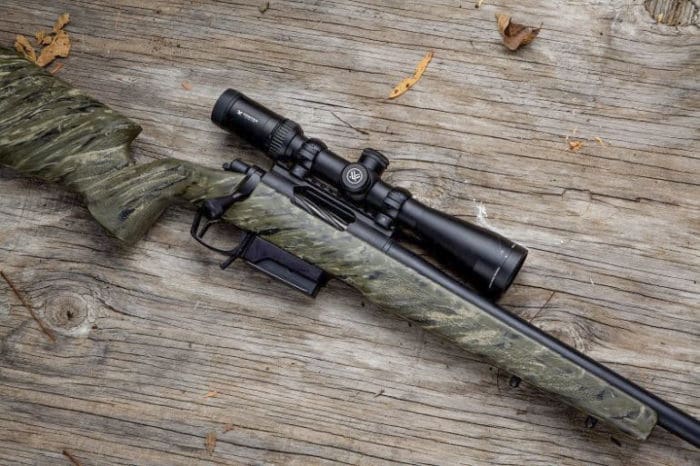John Stewart of Kiote Rifles is a gunsmith. I’ve handled his rifles. I’ve seen them shoot 1/2 MOA ten-round groups at 300 yards with factory ammo — and that was just while sighting in. But that’s not why I asked him to build my one-of-a-kind dream rifle.
I asked him to build my rifle because he’s a stubborn man who lives to build quality firearms. He doesn’t compromise on engineering, materials or craftsmanship.
I’ve spoken with Mr. Stewart at length about this design and build philosophy. I asked him to share his expertise with our readers. Specifically, what shooters should look for in a custom rifle. This is the first in a series of articles.
John writes:
There are a few things you should never skimp on when building a rifle. The first is the trigger. While it doesn’t have to be the $250 Calvin Elite Custom trigger (below), anything other than a factory trigger is a welcome upgrade.
Just like a car manufacturer, a gun maker is generally looking for the cheapest part that’ll get the job done — regardless of consistent function. They aren’t trying to make a great trigger. They’re trying to make a trigger that’s good enough to sell.
The aftermarket has to make a great trigger to warrant purchase. For them, it’s a race to the top — not just to see who can get it done the cheapest.
In this picture, a factory Remington 700 trigger is on the left. It’s made from stamped steel, with a large amount of separate moving parts, riveted together.
The Timney trigger on the right is made of machined aluminum, assembled with the minimum number of moving parts necessary to work (again, machined parts, not stamped parts). It’s assembled to tighter tolerances with screws that’ve been set in place with Loctite.
In this picture, you can see that the factory trigger’s sear is designed to be held in place by the sear pin. While simple, this compounds the problem of using cheap, stamped parts along with loosely controlled pin quality.
Notice how the Timney trigger’s sear is held in place between the machined body walls by a separate pin (look for the black pin on the right side just short of the sear pin hole). Its fit is very snug, but not tight enough to create friction, which would result in clunky movement.
Besides the high quality body framework, maintaining tight tolerances on pin quality allows for a cleaner, crisper moving part. This results in a more repeatable and accurate firing pin fall.
When it comes to a custom gun, precise repeatability is what you’re after. The trigger needs to function and feel exactly the same every time. The precise repeatability of the trigger will have a direct result in your ability to shoot with precision, both in terms of short and long term accuracy.
A quality aftermarket trigger is more likely to exhibit precise repeatability out of the box as well as over time. Start there.
